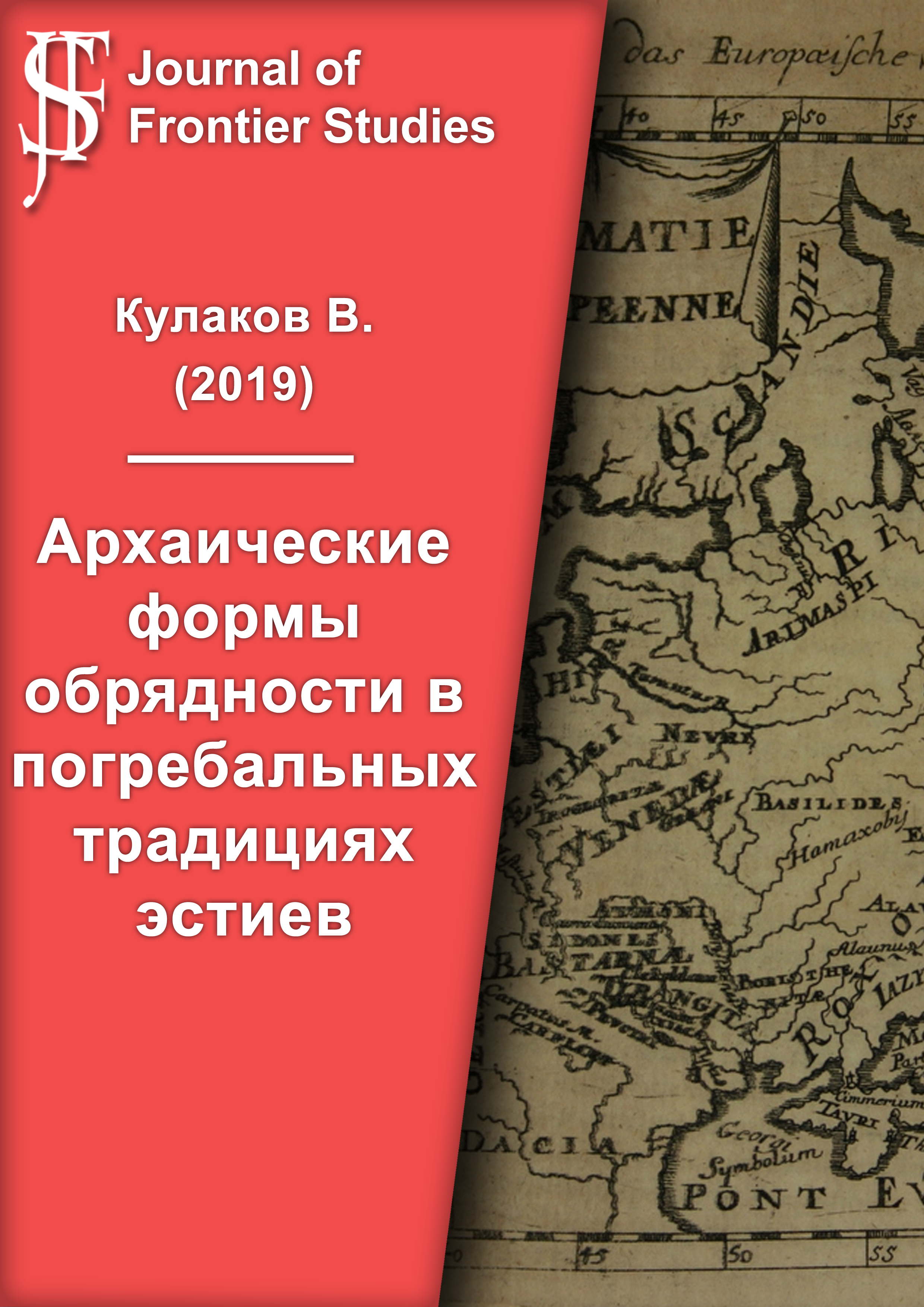Abstract
The article is devoted to the identification of archaic features rites in the funerary antiquities of the inhabitants of the Western border of the Baltic world of the first half of the I Millenium AD. These features can show the ethno-cultural continuity of the population of the Amber region in the eras of antiquity and the great migration of peoples with the local population of the early iron age. Fragmentary data available to modern archaeological science regarding “box-shaped” stone structures rudimentary in their nature suggest that this archaic feature of the rites is typical not for Aestii, but for their heirs – bearers of Prussian culture of the V-VII centuries. The reasons for the revival of this feature in the burial structures of the Prussians are not yet clear. Almost a Millennium lies between them and stone boxes in burial mounds of West Baltic barrows culture bearers of the early iron age. On the contrary, the archaic rudiments of the funeral rite of the Aestii – namely, placing several urns under a single masonry and masonry rounded shapes with stone rings (imitation of the design of the mound) are evidence of the preservation of the population of the Amber coast at the beginning of our era, the traditions of rituals rooted in the I cent. BC.
References
Berendt, G. (1874). Zwei Gräberfelder in Natangen und zwar Tengen bei Brandenburg und Rosenau bei Königsberg. SPÖG, Bd. XIV, pp. 2-15.
Grunert, W. (1935). Nadrauer Grabungen. Zeitschrift der Altertumsgesellschaft Insterburg, H. 20, Insterburg: Altertumsgesellschaft Insterburg, pp. 7-61.
Jaskanis, J. (1974). Obrządek pogrzebowy zachodnich bałtów u schyłku starożytności (I - V w.n.e.). Wrocław-Warszawa-Kraków-Gdańsk: Ossolineum.
Nowakowski, W. (1996). Das Samland in der Römischen Kaiserzeit und seine Verbindungen mit den Römischen Reich und der barbarischen Welt. Veröffentlichungen des Vorgeschichtlichen Seminars Marburg. Sonderband 10. Marburg-Warszawa: “Druk”.
PM-A 358/1, Prussia-Archiv. MVF (Berlin).
Kulakov, V. I. (2003). History of Prussia until 1283. M .: Indrik.
Kulakov, V. I. (2004). Dolkaym-Kovrovo. Research 1879. Minsk: Institute of History, National Academy of Sciences of Belarus.
Kulakov, V. I. (2016a). Treasures of the Amber region. Indicators of foreign cultural influences on antiquities of Sambia and Natangia in the I-IV centuries. Kaliningrad: “The Kaliningrad Book”.
Kulakov, V. I. (2016b). Grunayka: recreation of the lost complexes. Historical format, 3, pp. 62-80.
Kulakov, V. I. (2018a). Memorable tradition among the Aestians and Prussians. Archaeological news, 27, pp. 241-249.
Kulakov, V. I. (2018b). The beginning of the Gothic path to Eastern Europe. Notes IIMK RAS, 18, pp. 89-99.

This work is licensed under a Creative Commons Attribution-NonCommercial-NoDerivatives 4.0 International License.

